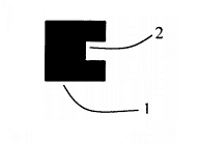EYE CHART FOR VISUAL ACUITY MEASUREMENT
|
Description |
The present invention refers to optotypes (or ocular vision tables) traced in a square mesh that is divided into squares of identical size to each other, and in which one of the frames defines a sufficient contrast space with the rest of the frames. These optotypes can be printed on appropriate supports to obtain devices in the form of a sheet or template, allowing to increase the accuracy of the measurement of visual acuity.
|
How does it work |
Visual acuity (VA) is the physiological ability to discriminate two separate points by a third located right in the middle. The greater its value, the greater the capacity of the eye to perceive smaller objects. The determination of VA is a practice of great importance both in medicine and in other disciplines of life in which it is required to demonstrate a certain minimum visual capacity.
In Optometry, to measure visual acuity, which is improved by correcting the refractive error that reduces it using ophthalmic lenses, contact lenses or refractive surgery, scales of optotypes (figures or symbols) specifically developed for this measure are used.
The main characteristic of these optotypes is the proportion of the lines that limit the dimensions of the blank or empty spaces (Figure 1), so that the precision of the measure is increased by eliminating the arbitrariness of said spaces or the disproportion of the same regarding the dimensions of the complete optotype.
The mesh that forms this optotype is formed by a grid of 3x3 with the same size, by varying the grid that remains empty of orientation allows to identify with precision the VA.
|
Advantages |
The use of the new optotype of the present invention avoids the imprecision in determining the compensation of the refractive defect and largely solves most of the drawbacks reflected in the state of the art. These devices will be very useful in optometry and ophthalmology cabinets, or any consultation where VA results are certified to obtain a specific license where a minimum value of this data is required.
|
Where has it been developed? |
This invention has been developed in the Faculty of Optics and Optometry and is protected by national invention patent since 2007. This group of inventors has generated more than 20 patents.
|
Contact |
|
© Office for the Transfer of Research Results – UCM |
|
PDF Downloads |
|
Classification |
|
Responsible Researcher |
Ricardo Bernárdez Vilaboa: rbvoptom@ucm.es
Department: Optometry and Vision
Faculty: Optics and Optometry




